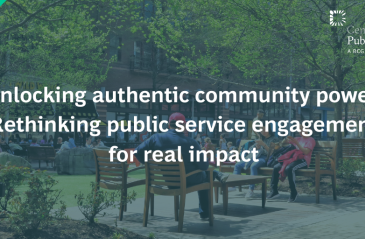
The power of storytelling in climate leadership

Digital technology in all its guises is now woven deeply through the city of Stockholm
Share articleStockholm has more than 70 fully integrated e-services which enhance quality of life
Share articleStockholm wants to be the worlds 'smartest city' by 2050
Share articleWe put our vision for government into practice through learning partner projects that align with our values and help reimagine government so that it works for everyone.
Stockholm's seemingly textbook integration of all things digital begins - for most visitors - at the airport. The quickest and easiest way into town is via the Arlanda Express, a high-speed 20 minute train service. No queues for passengers here; instead they can buy tickets in advance on its app and use it to receive the latest updates on train times: seamless, quick and effective.
This is one example of how digital technology in all its guises is now woven deeply through the loomed tapestry that is today's Stockholm. But there is no sense of complacency - at least while Ann Hellenius is around. As the city's chief information officer she is responsible for Stockholm's ongoing digitisation - from suburb to city centre and beyond - and her eyes are firmly fixed on the horizon.
“By the year 2020 there are projected to be more than one million people living in the city,” she points out. “This is about 200,000 more than live here today. We need to make sure that the city's development is sustainable, its services are fully integrated for all of its citizens, and that everyone has equal opportunities to progress - even when the city is changing so fast.”
What comes to mind when you think of Stockholm? Maybe it's the archipelago on which it is built: 14 islands, 160km of shoreline, all linked together by 57 bridges. Or maybe its famed restaurant scene (different cuisines abound) or family-friendly lifestyle (affordable childcare and free education for children and young people up to age 19).
Chances are, though, that if you work in government you will have been drawn to tales of the ‘Scandinavian miracle' - the region's success in achieving strong public services, supported by a market economy and fiscal discipline. Although Hellenius is the first to admit that Scandinavia is far from perfect, she agrees that Stockholm has fully embraced the potential of technology, setting new standards for other cities to follow.
“Fortunately, we have made rapid progress in our IT development and digitisation,” she says. “We have more than 70 fully integrated e-services, all of which to seek to enhance the quality of life for our citizens as well as streamline our own internal processes. But other cities are doing impressive work, too. Look at New York's engagement with its citizens. Its city officials work hand-in-hand with citizens to create e-services together. This is very inclusive and has meant that New Yorkers are aware of what is on offer.”
That said, it is clear that few cities - if any - can match Stockholm's success. Household computer and internet access is very high, for example. “We have even found that 67% of two year olds in Stockholm use the internet,” says Hellenius. “We have - for some years now - been able to use technology and the internet to achieve sustainable economic growth and promote innovation and education, thanks to our broadband deployment, our knowledge-based workforce, and digital inclusion.”
Key to Stockholm's success was the decision in the early 1990s to build a broadband network to support the operations of both the public and private sectors — as well as to offer better opportunities to individual citizens. In 1994, the government set up a company - Stokab - to build a fibre-optic network throughout the municipality and began offering transmission capacity to competing carriers for less than it would cost them to build their own networks.
The 1.2 million kilometre network has more than 90 operators and 450 enterprises. It is used by the city's administration and by 100,000 students and schoolchildren in the Stockholm area. Fully owned by the city, it benefits citizens and businesses directly. “Stokab provides fibre networks to the entire city, to both older companies and new digital enterprises,” says Hellenius, “which gives us a great advantage and is one of the reasons that we are at the forefront of city digitisation.”
Looking further ahead, Hellenius and her team are working towards a 2040 vision which takes a holistic view of the social, economic and democratic sustainability underpinning their entire approach. Digital technology is seen as a key component in attempts to preserve and further strengthen the quality of life in Stockholm
“Our vision now is for Stockholm to be the smartest city in the world,” she says. “This perhaps sounds a bit bold, but we need to be clear about what we mean by being a ‘smart' city. Our definition of what this entails may differ to how other cities see it. What we are saying is that ‘smart' combines flawlessly with everything else that makes Stockholm attractive, using digitisation to make the lives of the city's citizens and visitors easier and better.”
In practice, this means that digital technology should and will be deployed to strengthen everything about the city - from its parks to its streets to its transport system. This will lead to deeper efficiencies and cost savings, as well as better performing public services.
“We are really emphasising that this represents a chance to improve everyone's quality of life, irrespective of their age, wealth, or familiarity with computers,” explains Hellenius. “We are very focused on ensuring that we don't inadvertently create a digital divide between different groups in society. And it is also a priority to make sure that digital is leveraged into the lives of those schoolchildren who don't have access to the internet at home. We have to cater to their needs, just as much as those kids who have iPads at home.”
As part of its vision, Hellenius wants to see better use of the city's open data. Although Stockholm has put much of its information online, there is room for improvement. “We may be increasingly transparent but I don't see enough entrepreneurs coming up with new solutions using open data,” she says. “We need to be more focused on using open data to address problems in society and identify the solutions we need. It's an important priority for us.”
But whether it's open data or broadband investment, digital literacy or wireless infrastructure, one binding element of the approach is a reliance on robust metrics and analytics. “We carefully weigh everything up with cost-benefit analysis,” concludes Hellenius. “Whatever project we are focused on is supported by a robust plan in order to achieve the desired public impact. Right now we are focusing on the environmental sector, transport, education, and care for the elderly, but the potential to do more is huge. Technology changes so fast - I can't wait to see what happens next.”











